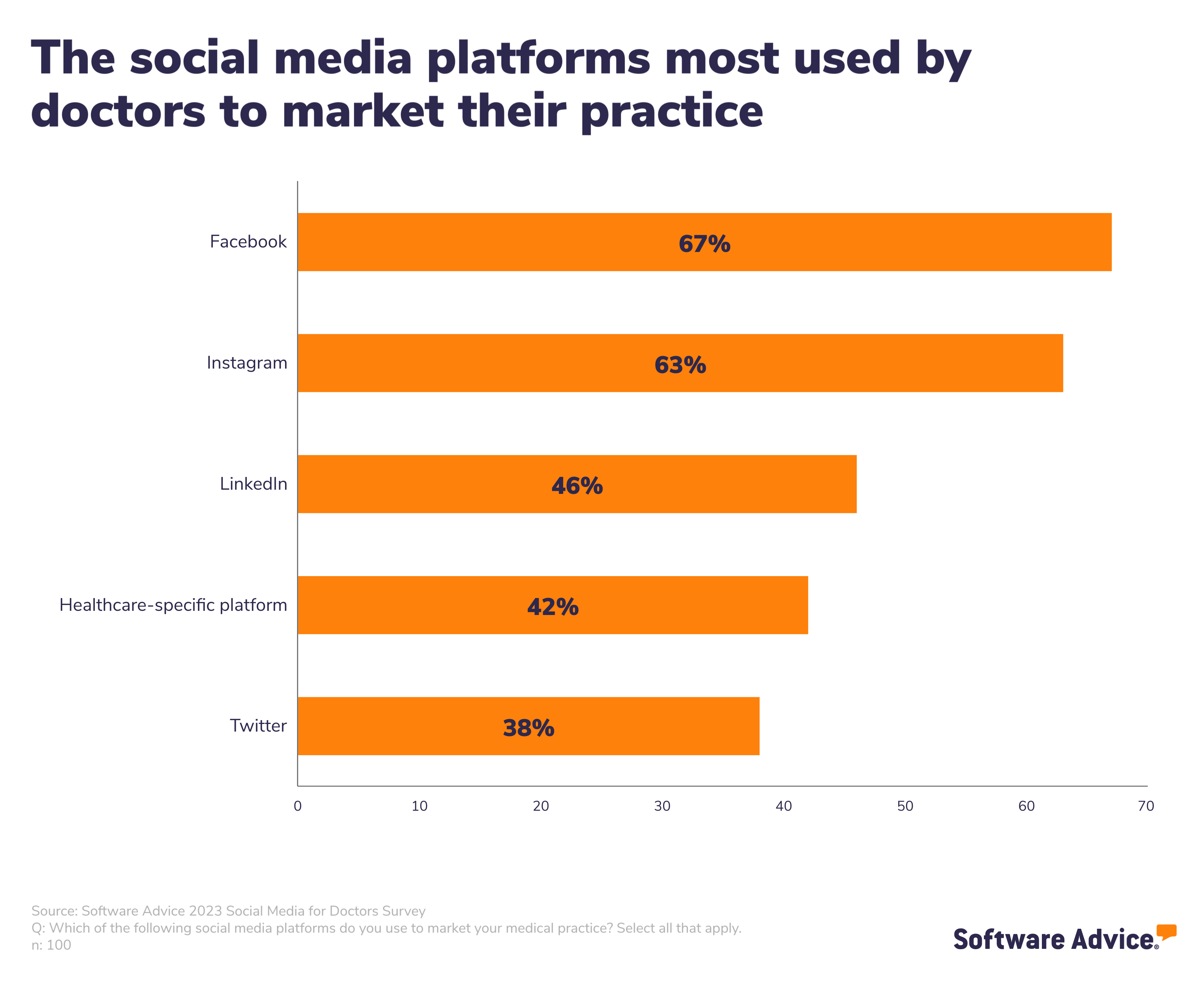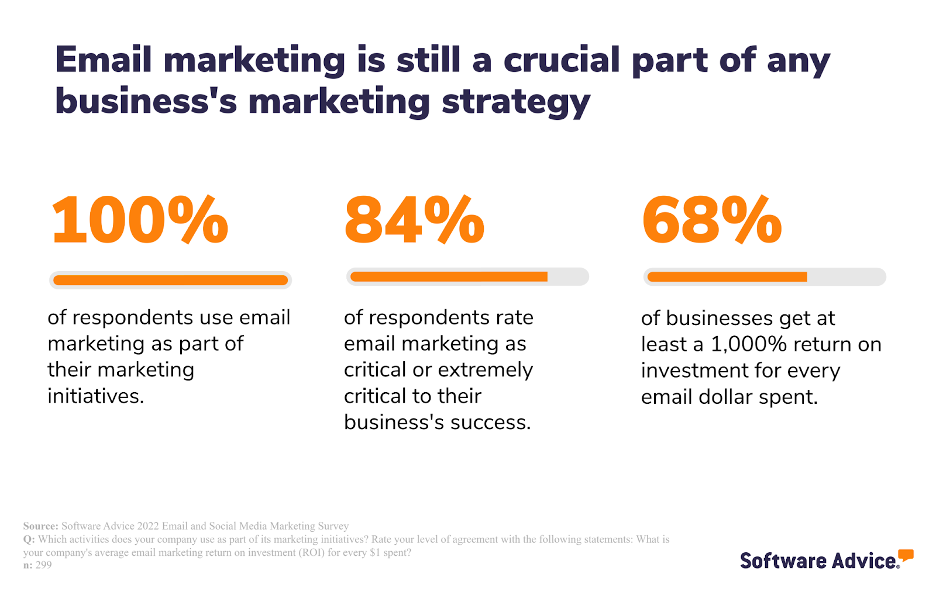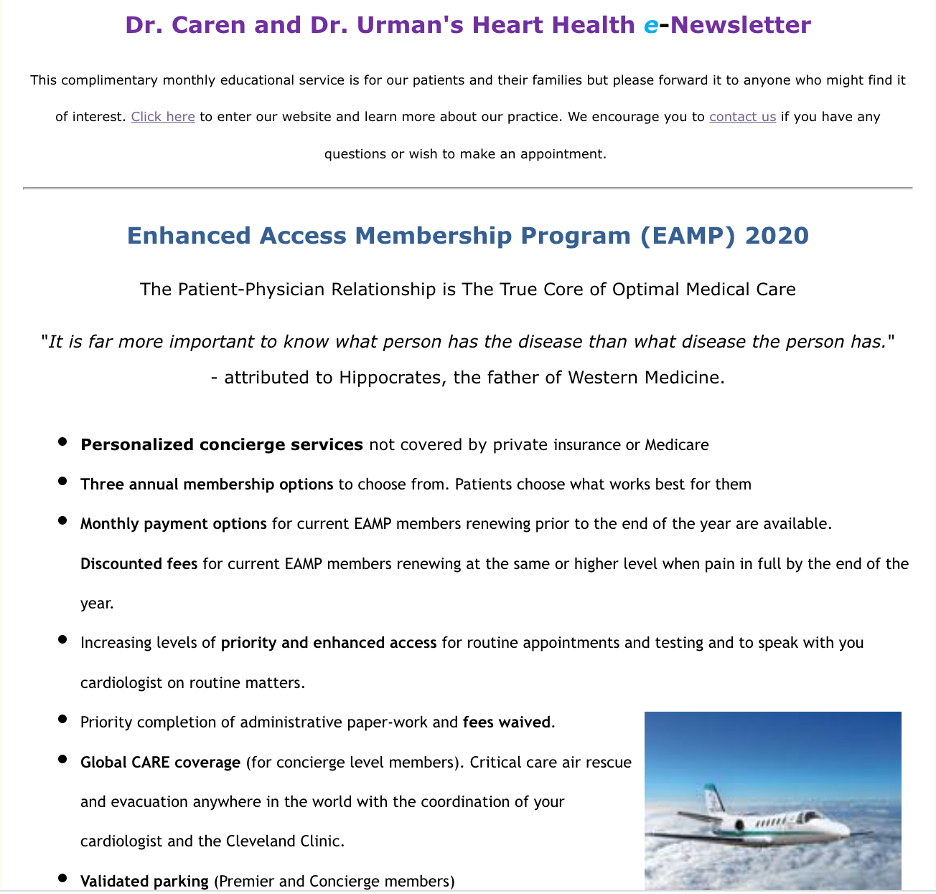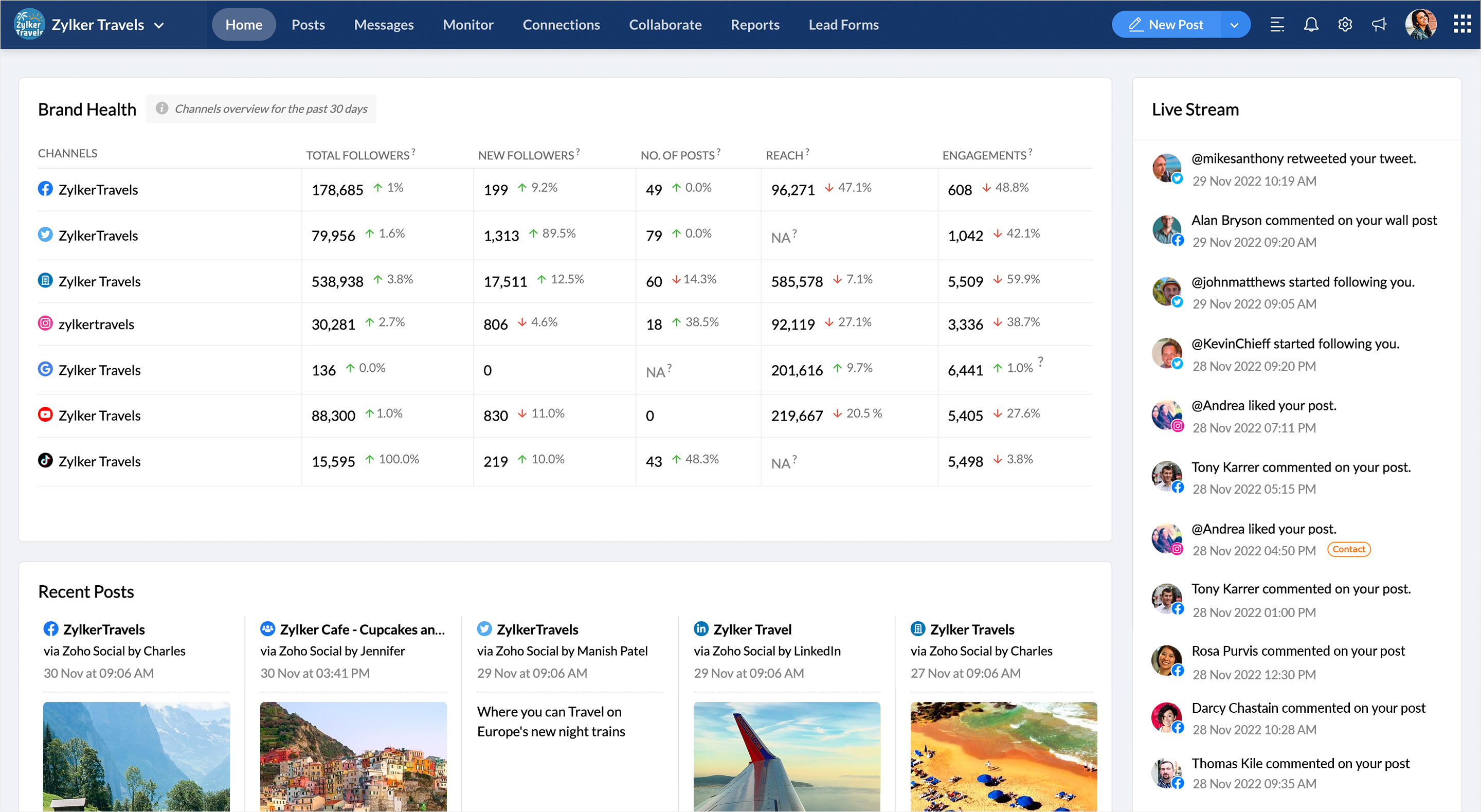A Doctor's Top Digital Marketing Tips for Your Practice
It can be a struggle for small-practice owners to attract new patients if they haven’t done a lot of digital marketing. There are so many different things to consider from what channels you should use? What should you post? How do you most effectively utilize email marketing? What should your website look like?
Digital marketing doesn’t have to be challenging or expensive; in fact, many digital marketing channels are incredibly low cost and can lead to a huge boost in patients. It’s a matter of prioritizing the right things and spending money on software where it can be most effective for your practice.
To that end, we talked to Dr. Ran Rubinstein [1], a cosmetic surgeon with over 20 years of experience, to learn about the digital marketing strategies he uses to attract new patients as well as keep his existing patients engaged.

Dr. Ran Rubinstein, cosmetic surgeon [1]
Keep your social media updated so that patients see the personal side of your practice
According to our recent Software Advice 2023 Social Media for Doctors Survey*, 81% of doctors see social media as an effective marketing method for their practice. It’s a low-cost, low-effort way to keep your patients engaged and even reach new patients in your area who might not otherwise know your practice exists.

Whether it’s patient acquisition, increasing patient engagement, or improving your reputation, social media is important to consider for any practice owner. The last thing you want is for a potential patient to look at your social media pages only to find they haven’t been updated in two years. They might even wonder whether you’re still in business.
For more information about the different pros and cons of social media for doctors, check out the video below:
First, make sure each of your social media channels are using professional, realistic photos of your business. Include your phone number, email address, and location prominently on each page so that potential patients can contact you without having to go back to a search engine.
Dr. Rubinstein uses social media to great effect by keeping his patients updated on what’s going on at his practice. In order to maintain his social media pages, he has one of his employees regularly update their pages at least once a week.
If you’re having an employee maintain and update your social media pages, make sure you carve out some time in their schedule each day or week to dedicate themselves to that particular project. It should be considered a part of their role and not something extra they do on the side.
Prioritize Facebook and Instagram and keep your posts lighthearted, educational, and engaging
The two most popular social media platforms for doctors and your patients are Facebook and Instagram, so that’s where you should be focusing your efforts.*

If you aren’t sure about which platform to prioritize, you can include questions in your patient engagement and experience poll which asks patients which social media they engage with most frequently. If the majority only use Facebook, you should prioritize posting there.
When it comes to what you should be posting on your pages, think about posting short videos or blurbs that show off your staff’s personalities so that your patients feel like they can connect with your practice and trust you to take care of their health.
The takeaway
Overall, if you want to have a successful social media marketing strategy, you should consider the following:
Be consistent
Be interactive with the patients responding to your posts
Post regularly to encourage engagement
Use real photos and content from your medical practice and not generic screenshots
Drive patients to your website by sharing content from your blog, if you have one
Utilize email marketing to nurture existing patients for improved engagement
Email marketing is a low-cost, and in some cases free, marketing channel that is important for practice owners looking to expand their digital marketing strategy.
According to our 2022 Software Advice Email and Social Media Marketing survey**, over one-third (34%) of surveyed businesses get anywhere from 21% to 40% of their total business revenue from email marketing alone. Additionally, 68% of respondents get at least a 1,000% ROI for every dollar spent, with a portion of those getting as high as 4,900% ROI.
Those numbers might seem staggering to you, but when you consider that, if you’re creating newsletters yourself without the aid of email marketing software, it only costs you your time.

Once you bring software into the mix, you’re spending less time due to the increase in efficiency. You can even purchase software that serves two purposes.
For instance, Dr. Rubinstein uses software that allows him to send patient reminders about what they’re next due for. “If they’ve had a certain procedure done that should be repeated every three months, the software program will send them a reminder.”
Email marketing software also comes with reporting that will let you know how effective your strategies are so that you understand what’s working and what might need to be improved upon.
Note
When you’re looking for email marketing software, make sure that the email newsletters that it produces and sends are responsive, meaning they are optimized to look good regardless of whether they are viewed on a mobile device, a desktop computer, or a laptop.
Here’s what you should be including in your email newsletters
Above all, you want to ensure you have a specific goal in mind when it comes to your email marketing strategy. For instance, if your goal is to get more new patients to enroll, you want to make sure that the core of your email marketing strategy promotes clicks to your website’s enrollment form.
If you want to focus on maintaining and nurturing existing patients to increase referrals, send them to your social media pages or focus on engaging health-related email newsletters that your patients might want to forward to their friends.
Use email marketing software to create weekly, bi-weekly, or monthly newsletters that go over any promotions, updates, news, or important dates that might be coming up. Additionally, you can be more personalized with your emails by sending specific groups of patients, such as those with chronic conditions, educational materials to help keep them on track.

An example of what an email newsletter might look like for a healthcare practice [2]
Ultimately, like any digital marketing strategy, you want to be intentional about everything. Don’t just send newsletters because you think you have to do it. Think about what you’re including and how it will lead to accomplishing your goals.
If you want a more complete breakdown of why email marketing is crucial for any healthcare organization looking to improve their overall marketing strategy, check out How To Improve Your Healthcare Email Marketing. We do a deeper dive into strategies and important considerations for healthcare email marketing.
Use your website to promote testimonials and give your patients an easy way to contact you
Your website should be at the heart of your digital marketing strategy. It’s likely going to be the first place that a new patient engages with you and your brand after they conduct an online search looking for new doctors, so you want to make sure it’s up to date and looks professional.
And thankfully, whether you’re hiring an outside service to build and maintain your website or using website design software to do it yourself, it’s never been easier to have a professional-looking website.

Example of Wix’s custom website builder (Source)
Dr. Rubinstein emphasizes the importance of being hands-on and proactive when it comes to updating his website: “We’re always updating our site if we begin to offer new procedures. We’re adding new before and after photos, or if there’s a new review that is pertinent to a certain procedure, we’ll include it on the relevant page.”
He hires a website designer to update his page for him, but he stresses the importance of double checking everything regularly to make sure things are posted properly. (The last thing you want is for the before and after photos to be in the wrong order.)
An additional consideration for your website
A responsive, user-friendly website helps you with search engine optimization (SEO). Search engines prioritize responsive websites, which is a website that adapts to different screen sizes. It will fit all of the information on the screen in a usable, visually appealing way regardless of the screen size, so people who primarily interface with the internet via their mobile devices have the same experience as those who use a laptop or desktop computer.
For more information about why you should care about SEO and prioritize it to increase your online presence, check out Your Complete Guide to SEO for Your Medical Practice.
Here’s what you should consider when it comes to your website
First, much like your email newsletters, you want to ensure your website is responsive and mobile friendly. Most website builder software options are going to make responsive websites by default these days, but it’s still an important consideration. The difference between a normal website and a mobile-friendly website is that the mobile-friendly option will be more flexible.
You also want to make sure that you include all the services you provide in an easily accessible spot on your website. Make sure you have a visible, easily accessible link to all your services, procedures, and treatments in the top banner of your homepage. You also want to make sure that you have a navigable dropdown menu so that patients can get to their desired pages no matter what page they’re currently looking at.
You might also want to include a link to your patient portal, content blog, or social media pages as well.
Find a few examples of what other practice owners in your industry are including on websites that you think look nice and try to emulate that. The last thing you want to do is stray too far from what’s normal when it comes to website design because your patients are used to navigating the internet and web pages in certain ways, and anything that deviates from that can lead to frustration and a bad user experience.
Measuring your successes and failures is crucial to improvement
Now that you know what kinds of digital marketing strategies you should consider, you need to know how to measure success. When it comes to measuring success, there’s no such thing as too much data; that’s why using software can be such a huge boon. Nearly every software option is going to have some sort of reporting feature that will let you know how your marketing efforts are doing.
For instance, Dr. Rubinstein uses his email marketing software’s reporting features to help him measure the success of his email newsletters. If he sends out a newsletter, and it has a 30% open rate, he can go into the software and check to see what links his patients clicked on to help hone his email marketing strategies.

An example of email marketing reporting numbers (Source)
He also mentions it’s important to keep word of mouth in mind. He asks “how patients have heard about them” and also takes note of how busy they are to get a general idea if his efforts are working. He’ll often have patients come in and say “I saw your post on social media” which is confirmation that it’s working.
Because it’s not usually as granular as getting actual reporting from your email newsletters, it can be hard to measure the success of your social media presence. While it’s true that some devoted social media analytics software can help you do a deep dive into your social media metrics, unless you have a large follower count, the cost to get more software may not be worth it.
However, if you do have a large social media presence, it’s worth considering. Knowing which of your social media pages has the highest engagement and reach will help inform your marketing efforts moving forward.

An example of social media analytics software reporting (Source)
If you don’t have a large following, you can still run internal surveys of your patients to gauge their engagement as well as the effectiveness of your marketing strategies. Including a question asking “where did you hear about us?” in your intake form is a great way to understand what strategies are effective and where you need to spend some time to improve.
Social media software to consider
Social media marketing software helps you create, track, and manage your social media accounts while also providing you with reports on performance metrics such as cost, revenue, and profits. This helps you more easily track ROI.
Social media management software is designed to help you engage with your patients. It can help you publish content to all the platforms you use from one location, locate particular social media users or conversations, and measure the relative success of your social media posts.
Social media analytics tools help you gather and process the data from conversations on social media that involve your practice, whether that’s on your page or somewhere else. This type of tool will have advanced data analytics capabilities which can help you make better business decisions around your social media use.
Digital marketing doesn’t have to be challenging or expensive
Understanding what digital marketing channels are available to your practice and being intentional about where you devote time and resources is crucial to the success of your marketing strategy. Don’t think of your digital marketing strategy in silos; they should work together and feed into one another to be most effective.
For example, your social media pages should link to your website which should have an email newsletter form. Your email newsletters should include your most engaging social media content and links to your website’s referral or intake form.
With a solid digital marketing foundation, you should be able to retain and attract new patients without having to spend a lot of money.
For more resources about how to best marketing your medical practice, check out these articles:
Everything You Need To Know About Medical Practice Marketing
Patient Satisfaction Survey Examples To Improve the Patient Experience
Survey methodology
* Software Advice's 2023 Social Media for Doctors Survey was conducted in April 2023 among 100 doctors working at practices in the U.S. The purpose of the survey was to determine how these respondents use social media in either their personal lives, their professional lives, or both. Respondents were screened for job title and limited to those who work at practices with no more than 20 licensed providers on staff.
** Software Advice’s 2022 Email and Social Media Marketing Survey was conducted in January 2022 among 299 respondents to learn more about small, midsize, and large business email and social media marketing tactics. Respondents were screened for full-time employees of all company sizes that have involvement with marketing-related activities. They must have been working within roles including advertising, brand management, customer experience or service, data and analytics, IT, marketing, product marketing and management, sales or strategic planning and be current email and social media marketing users.
Note: The applications mentioned in this article are examples to show a feature in context and are not intended as endorsements or recommendations.
Sources
Dr. Ran Rubinstein's about me page, Ran Rubinstein Laser & Cosmetic Surgery Specialists
Email example image, One Medical